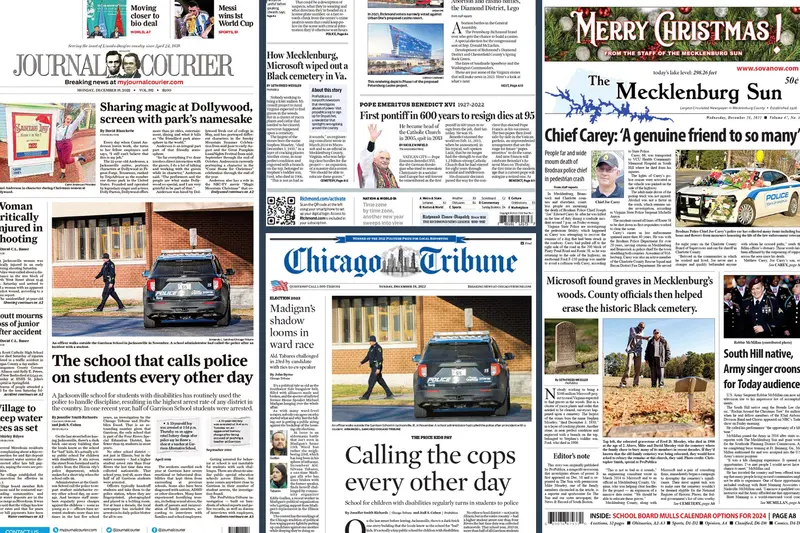News Articles Fundamentals Explained
Table of ContentsNews Articles - The FactsSome Ideas on News Articles You Need To KnowSome Known Details About News Articles News Articles for BeginnersThe Best Guide To News Articles
Great understanding of different topics gives pupils an affordable side over their peers. Despite the fact that digital and social media sites are readily available, we need to not fail to remember just how crucial it is to check out the newspapers. Parents must attempt and inculcate the behavior of reading a paper as a daily regimen to continue the tradition of the adored print medium.News stories additionally have at the very least one of the adhering to crucial attributes relative to the desired target market: distance, importance, timeliness, human interest, strangeness, or consequence.
Within these limitations, information tales additionally aim to be detailed. Nonetheless, other aspects are included, some stylistic and some stemmed from the media type. Among the larger and extra recognized papers, justness and equilibrium is a significant factor in offering details. Commentary is generally confined to a separate area, though each paper might have a various general slant.
Papers with a worldwide audience, for example, tend to use a more formal design of writing. News Articles.; usual design guides include the and the United States Information Style Book.
The Of News Articles
As a policy, reporters will certainly not utilize a long word when a brief one will certainly do. They use subject-verb-object building and construction and dazzling, energetic prose (see Grammar). They offer narratives, instances and metaphors, and they seldom depend upon generalizations or abstract concepts. Information authors attempt to prevent utilizing the same word greater than once in a paragraph (often called an "resemble" or "word mirror").
Nonetheless, headings often omit the topic (e.g., "Leaps From Watercraft, Catches in Wheel") or verb (e.g., "Feline lady lucky"). A subhead (likewise subhed, sub-headline, subheading, caption, deck or dek) can be either a subservient title under the major heading, or the heading of a subsection of the short article. It is a heading that comes before the primary message, or a team of paragraphs of the major message.

Extra billboards of any of these types may show up later in the article (specifically on succeeding web pages) to attract further analysis. Such billboards are likewise used as reminders to the post in other areas of the magazine or website, or as ads for the piece in various other publication or sites. Normal structure with title, lead paragraph (recap in strong), other paragraphs (information) and get in touch with information.

Example of a hard-lead paragraph NASA is suggesting one more area job. The company's budget request, announced today, included a strategy to send out one more goal to the Moon. This moment the firm really hopes to develop a long-lasting facility as a jumping-off point for other space adventures. The budget plan requests roughly $10 billion for the project.
The NASA news came as the firm requested $10 billion of appropriations for the project. An "off-lead" is the 2nd most essential front page information of the day. The off-lead shows up either in the leading left corner, go to my blog or straight listed below the lead on the. To "bury the lead" is to start the write-up with background details or details of additional importance to the viewers, requiring them to find out more deeply into an article than they need to have to in order to discover the vital points.
Facts About News Articles Revealed
Usual use is that one or more sentences each form their very own paragraph. Journalists typically explain the company or framework of a news story as an inverted pyramid. The necessary and most fascinating aspects of a tale are put at the start, with sustaining info adhering to in order of decreasing value.
It enables individuals company website to discover a subject to only the depth that their inquisitiveness takes them, and without the imposition of details or nuances that they could think about irrelevant, however still making that info offered to extra interested readers. The inverted pyramid structure likewise allows posts to be cut to any arbitrary length during layout, to fit in the area readily available.
Some authors begin their tales with the "1-2-3 lead", yet there are several kinds of lead offered. A kicker can refer to multiple points: The last tale in the news broadcast; a "happy" tale to end the program.
Longer write-ups, such as publication cover short articles and the pieces that lead the within areas of a paper, are called. Feature tales differ from straight news in several means. Foremost is the lack of a straight-news lead, most of the moment. Rather than offering the essence of a story in advance, function writers might attempt to lure viewers in.
Fascination About News Articles
The journalist usually details communications with meeting topics, making the piece a lot more individual. A feature's very first paragraphs commonly relate an appealing minute or occasion, as in an "anecdotal lead". From the particulars of an individual or episode, its sight swiftly broadens to abstract principles about the story's subject. The area that signifies what an attribute has to do with is called the or signboard.
The Editor's Tool kit: A Reference Guide for Beginners and Professionals (2001) Allan M. Siegal and William G. Connolly. The New York Times Manual of Design and Usage: The Authorities Style Guide Utilized by the Writers and Editors of the World's The majority of Authoritative Paper (2002) M. L. Stein, Susan Paterno, and R.